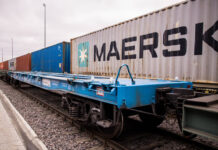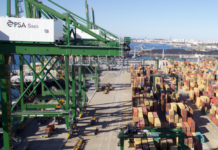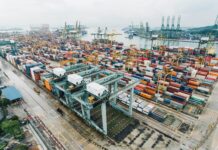
Digital Container Shipping Association (DCSA) published the Just-in-Time (JIT) Port Call Data Definitions version 1.2 Beta, which includes interface standards and message Application Programming Interface (API) specifications for 110 transaction-agnostic event timestamps.
In this way, it is expected to enable the full planning cycle for all marine services, including navigation, towing, mooring and other ship services.
DCSA JIT interface standards enable carriers, ports, terminals, and other service providers participating in a port call to exchange event data in a uniform manner, resulting in automated data exchange.
According to DCSA’s statement, stakeholders who widely adopt the association’s JIT port call standards will benefit in the following areas:
- Improved port call planning through advance notification of arrival/departure and berth availability will enable vessels to adjust speed ahead of arrival, reducing fuel consumption and therefore emissions.
- Transparency of berth (and yard) planning in terminals (between appropriate stakeholders) will allow service providers to better plan gangs and assets to improve overall utilisation and reduce idle time.
- Consistent timestamp measurements will enable best practice comparisons for the benefit of all stakeholders including end customers who should see marked improvement in cargo delivery and release processes.
DCSA JIT port call standards enable the practical application of the principles outlined in a recently published IMO study – Just In Time Arrival – Emissions reduction potential in global container shipping.
According to a study, between 4% (12 hours before arrival) and 14% (port to port) of fuel used per voyage can be saved.
This figure represents 6 to 19 million tons of CO2 saved annually by improving the efficiency of port calls, a number that translates to 3-10% of the total emissions of the container shipping industry.
It should be noted that the DCSA Just-in-Tine Port Call Data Definitions 1.2 Beta is open to public evaluation and comment for three months. Interested parties can download the standards and submit feedback at www.dcsa.org/feedback.
DCSA will revise the standards based on the data and publish the official version of DCSA Just-in-Time Port Call Data Definitions 1.2 within a three-month time frame.
DCSA Just-in-Time Port Call Data Definitions 1.2 Beta release includes the following set of documents:
- DCSA Just-in-Time Port Call Data Definitions 1.2 Beta
- DCSA Interface Standard for Just-in-Time Port Call 1.2 Beta
- DCSA Industry Blueprint 2022.2
- DCSA Information Model 2022.2
- Associated Reading Guides, where applicable
In addition to these documents, DCSA has published an API definition on the SwaggerHub open-source API development platform, and a reference implementation is available on GitHub.





